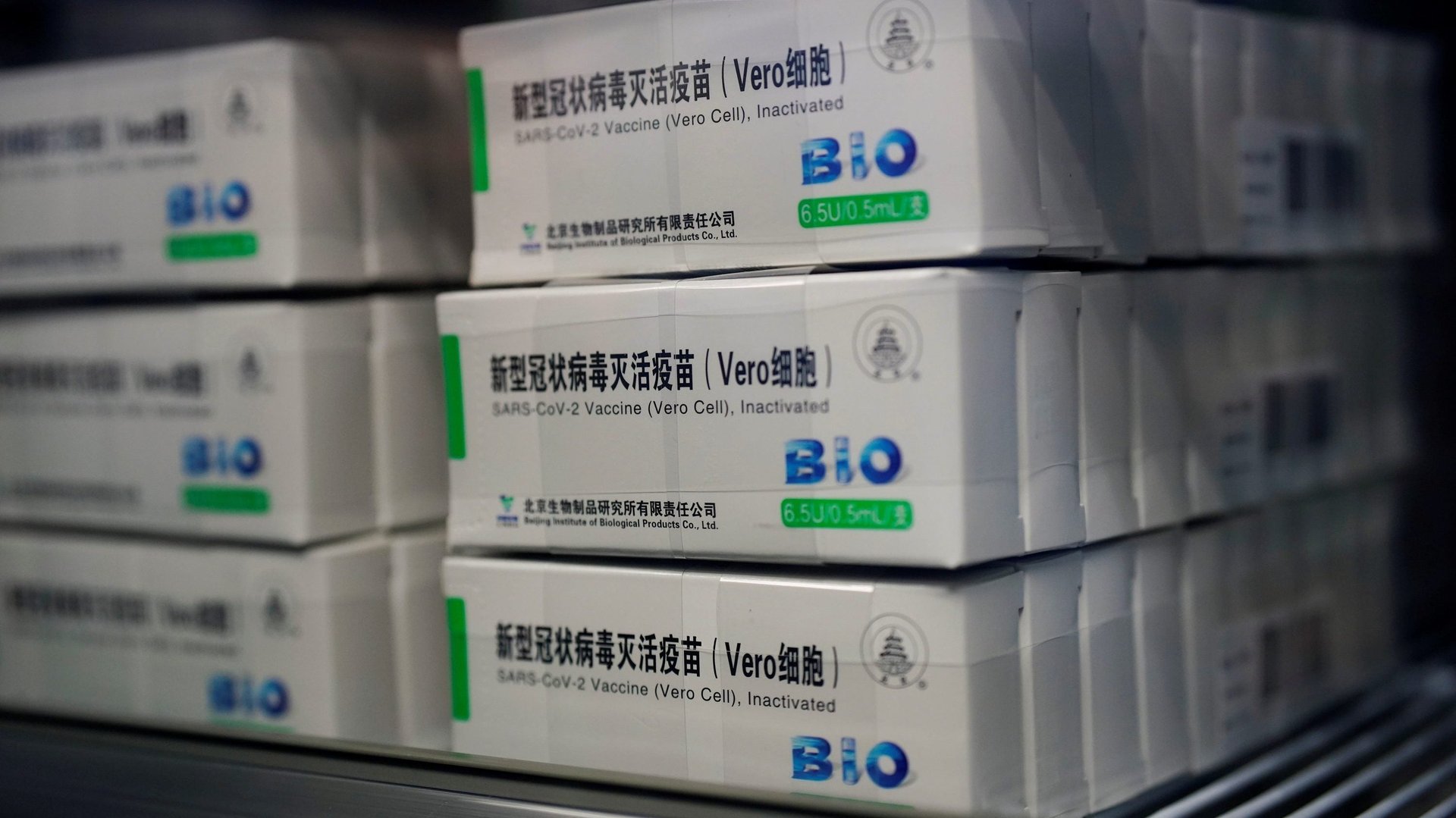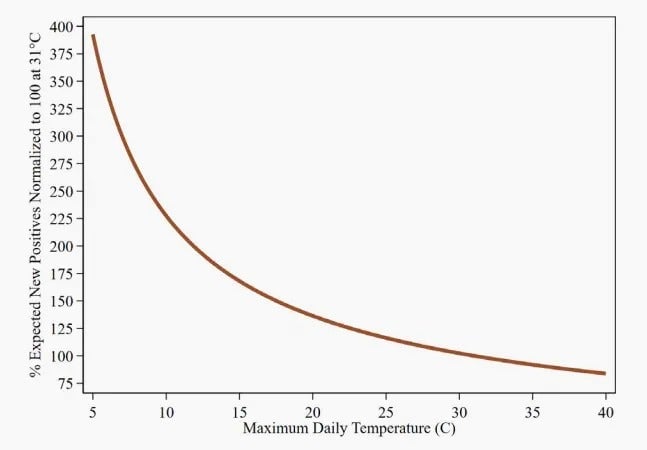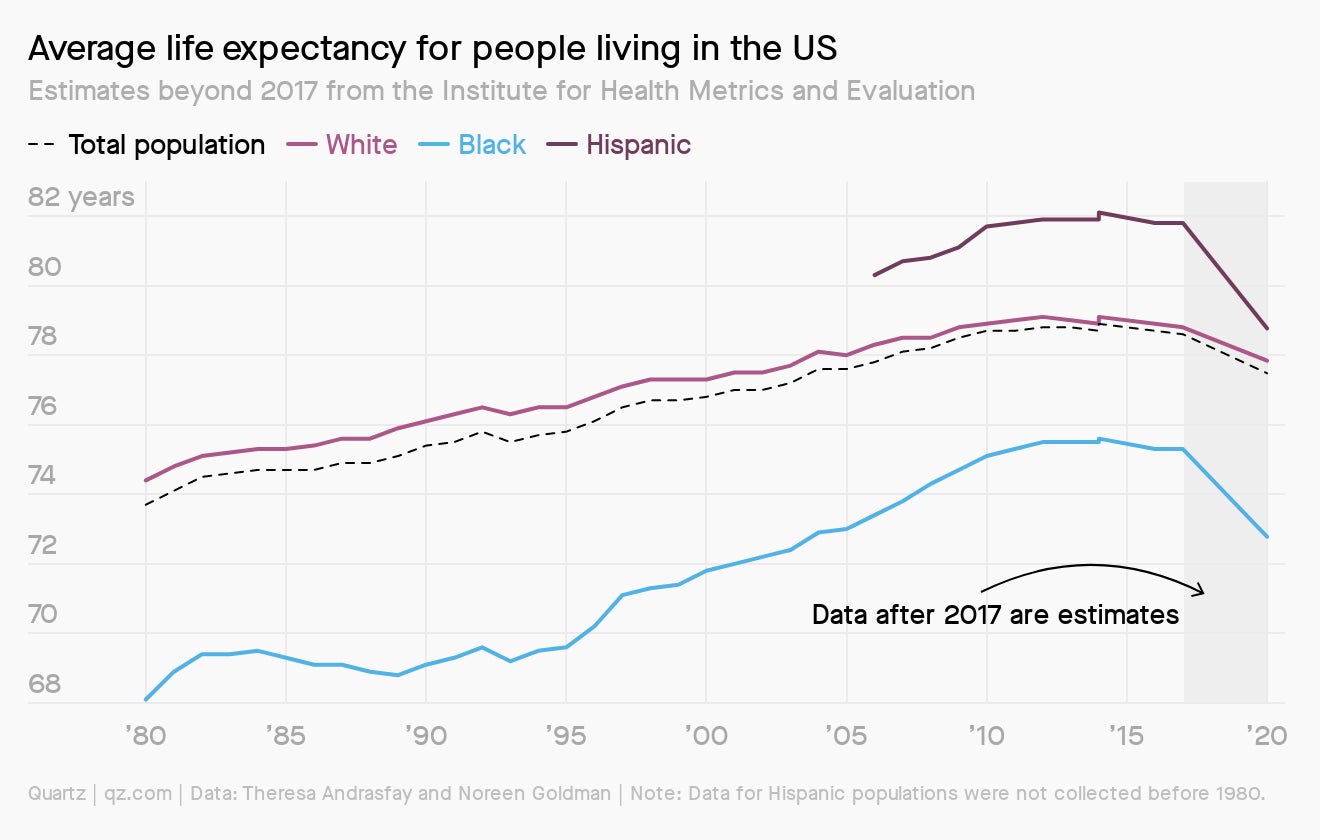Winter came
Hello Quartz readers,


Hello Quartz readers,
Covid-19 is turning out to be even more dangerous than epidemiologists and public health officials had feared—and not just because of the more contagious variants making their way around the globe. Coronaviruses, which generally show less seasonal variation than influenza, tend to have a weak response to changing temperatures. But Quartz’s Michael Coren reviewed research that suggests SARS-CoV-2 is different.
“People are thinking they’re looking at something like influenza, and it’s a lot worse,” says University of California professor Richard Carson, who published a preprint (pdf) in November suggesting Covid’s reaction to changing temperatures, known as its temperature response curve, may be even more pronounced than influenza, the ultimate seasonal virus. “A lot of things people were doing in the summer we thought were working were actually hotter temperatures giving the appearance these things were working.”
Carson and his co-authors arrived at this conclusion by excavating states’ death certificate records and matching trends in Covid-19 deaths against maximum daily temperatures over a three-month period between April 16 and July 15, 2020.
According to the research (pdf), now undergoing peer review, the virulence of the virus—its degree of transmissibility—increases below 31°C (88°F). Its “sweet spot,” says Carson, is around 4.4°C (40°F), but that’s only its preferred condition. Temperatures between 5°C and 10°C (41°F to 50°F) also favor transmission and infection.
The study’s model revealed a strong correlation between changing temperatures and the number of Covid-19 cases and deaths from a baseline of 31°C, the US mid-summer average. By the time the weather drops to a chilly 5°C, the model shows deaths rising by 160% due only to the influence of cold weather, even after controlling for state shelter-in-place orders.
Covid-19 transmissions showed an even stronger effect. Four times more new Covid-19 positive cases are expected when temperatures drop to 5°C, assuming no other interventions such as masks or social distancing. Only when temperatures drop a few degrees below freezing, the point when water droplets quickly freeze in the air, do Carson and his team project transmission to slow.
“It’s a real frightening paper,” says Carson. “We know the temperature response curve for influenza. This one is much steeper.”

You asked…
…a lot of questions! Here are three recent commonly held Qs, with a strong doctor’s recommendation to click through for more comprehensive intel:
- Will the Covid-19 vaccine work on the new variant? Most likely yes. But at the moment, scientists are keeping an eye on two kinds of mutations: some that make the virus more infectious, and others that appear to make it capable of evading antibodies generated by vaccines.
- Can you file for unemployment if your workplace is unsafe about Covid-19? US president Joe Biden would like the answer to be yes: His administration will ask the Department of Labor “to consider clarifying that workers who refuse unsafe working conditions can still receive unemployment insurance.”
- What if I don’t get my second vaccine dose on time? The US Food and Drug Administration and the CDC have both acknowledged that spacing doses farther apart than the standard 21-28 days may not hurt. The CDC says it’s OK to receive a second vaccine dose as many as four days early, or 42 days after the first.
That’s diplomatic
Though China’s vaccine diplomacy tends to revolve around its homegrown vaccine candidates—the country has sent millions of doses of the Sinopharm and Sinovac shots to countries around the world—Mary Hui reports that state propaganda also seems geared at undermining public trust in the vaccine developed by Pfizer and BioNTech.
This month, major propaganda outlets including Xinhua, People’s Daily, and China Daily have all published articles about the deaths of elderly shot recipients in Norway, and accused English-language media of downplaying the deaths. Chinese state media reports distorted the words of Oslo’s national drug regulatory body to suggest a causal link had been established between the deaths and the vaccine (inaccurate), while a prominent anchor on state-run television tweeted that foreign media were also ignoring 10 deaths in Germany shortly after receiving the Pfizer vaccine. That tweet was shared by the Chinese foreign ministry’s most abrasive voice.
China’s rhetoric comes in the wake of English-language reporting on the efficacy of the Chinese vaccines, and the sparse data accompanying them—which have been seen by some as a concerted effort to cast doubt on the Chinese vaccines. These vaccines are an important source of national pride, a sign that the country is competitive in science and technology with other advanced economies.

Fate expectations
For nearly a year, the pandemic has killed Black and Latino Americans at disproportionately high rates. Scientists predict those deaths will have lasting effects on these populations’ life expectancies, Katherine Foley reports.
In a recent paper, Theresa Andrasfay, a gerontologist at the University of Southern California, and Noreen Goldman, a professor of demography at Princeton, calculated that Covid-19 deaths through the end of 2020 would likely shorten the average life expectancy in the US by 1.1 years, from 78.6 in 2017 to 77.5 in 2020. For Black and Latino populations in the US, researchers expect life expectancies will fall from 75.3 years to 72.8 years and 81.8 to 77.8, respectively.
Life expectancy in the US was on a steady upward climb for decades. That trend was interrupted in the mid-2010s, as the country experienced higher levels of suicide and deaths by drug overdoses during the opioid epidemic. But the scale of those losses are nothing compared to the pandemic. The last time the US experienced any drop in life expectancy was between 2016 and 2017, when it dropped from 78.7 to 78.6 years; the drop due to Covid-19 is likely to be 10 times higher.

What’s your type?
Are you loving or hating working from home? Your answer may signal the type of remote worker you are, according to a global survey of 32,000 workers polled by Steelcase.
😔 The isolated Zoomer. Lives alone and misses social connections at the office; considers the home office a lonely cage.
🎨 The frustrated creative networker. Craves spontaneous connections and in-person connections; considers the home office a suspension from normal life and work.
👶 The overworked caretaker. Torn between work and family, with exhaustion and guilt piling up; considers the home office a non-stop flow of competing demands.
🕺 The autonomy-seeker. Works at their own rhythms and enjoys the flexibility of braiding life and work; considers the home office freedom.
😶 The relieved self-preservationist. Welcomes the respite from an organization that doesn’t value them; considers the home office the only place they are safe.
Are we missing a WFH type? Do you identify with more than one? Are you an autonomy-seeker with sage wisdom for the isolated Zoomers among us? Tell us all about it in an email.
Essential reading
- The latest 🌏 figures: 99.9 million confirmed cases; 55.2 million classified as “recovered;” 68.1 million vaccine doses administered.
- Southern discomfort: South Africa is scrambling for enough Covid-19 vaccines.
- Mind the gaps: How cities can make their vaccine communication comprehensive.
- Everything must go: Online fashion brands are snatching up retailers hobbled by the pandemic.
- Finally: Biden’s Covid-19 response is the science-based plan the US needed all along.
Our best wishes for a healthy day. Get in touch with us at [email protected], and live your best Quartz life by downloading our iOS app and becoming a member. Today’s newsletter was brought to you by Michael Coren, Katherine Foley, Lila MacLellan, Mary Hui, Anne Quito, and Kira Bindrim.